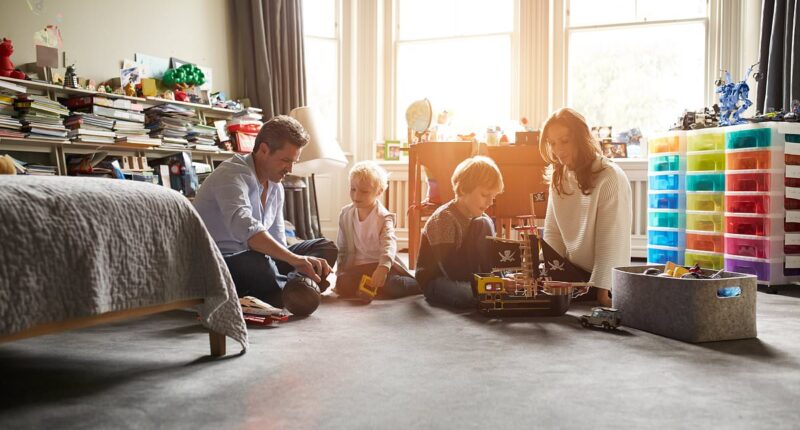Along with giving your baby a restful night’s sleep, their mattress could also be causing brain damage.
Researchers from Canada found that children’s mattresses can contain harmful substances such as flame retardants and phthalates. These chemicals, which are used to reduce flammability and increase flexibility in products, have been linked to higher risks of brain damage and cancer.
The team measured the levels of chemicals in the bedrooms of children between six months and four years old.
The researchers discovered elevated levels of over 24 different types of flame retardants, plasticizers, and UV filters in the room, with the highest concentrations near the children’s beds. These chemicals are commonly used to block ultraviolet light.
A complementary study involved testing 16 new children’s mattresses, confirming that these products were likely the primary source of the identified chemicals in the bedroom environment.
Co-author Arlene Blum, executive director of the Green Science Policy Institute, said: ‘Parents should be able to lay their children down for sleep knowing they are safe and snug.
‘Flame retardants have a long history of harming our children’s cognitive function and ability to learn. It’s concerning that these chemicals are still being found in children’s mattresses even though we know they have no proven fire-safety benefit, and aren’t needed to comply with flammability standards.’

Researchers tested children’s mattresses and found they contained concerningly high levels of toxins
Phthalates are chemicals used to make products more flexible and able to withstand certain conditions, as well as help reduce cracking.
These substances are found in makeup, nail polish, hair spray, body lotion, shampoos and cleansers.
They’ve been linked to infertility, breast cancer, obesity, cardiovascular and neurological complications and behavioral problems.
While flame retardants are added to products to make them less flammable and can be in anything from clothing to furniture.
They have been linked to an increased risk of brain damage, neurological development problems, lower IQ and attention, learning and behavioral disorders in children.
Researchers said: ‘Children are uniquely vulnerable to exposure, given that they are still developing, have hand-to-mouth behaviors, and have breathing rates ten times higher than adults.
‘They also have more permeable skin and three times the skin surface area relative to their body weight than adults.’
Once the researchers discovered the high levels of toxins in children’s mattresses, they tested the items again after simulating a child’s body sleeping on them.
With the simulated temperature and weight on the mattresses, emissions of the chemicals increased substantially – in some cases by several times.
And while the products tested were purchased in Canada, most contained materials originating from other countries, including America and Mexico and the researchers said the results are likely to apply to mattresses purchased throughout North America.
Senior author Miriam Diamond, professor at the University of Toronto, said: ‘Sleep is vital for brain development, particularly for infants and toddlers. However, our research suggests that many mattresses contain chemicals that can harm kids’ brains.
‘This is a wake-up call for manufacturers and policymakers to ensure our children’s beds are safe and support healthy brain development.’

To reduce a child’s exposure, the researchers recommend using undyed and neutral bedding, which is less likely to contain harmful chemicals
Researchers said the levels of flame retardants found in the mattresses were ‘puzzling’ given the chemicals are not necessary to pass Canadian or US flammability standards.
As a result of their findings, the researchers are calling for manufacturers to be more vigilant about the chemicals they use in their products and for there to be stronger regulations on the use of these toxins in children’s products.
In the US, three types of phthalates are banned from use in children’s items. The UK bans four.
The US also has loose restrictions when it comes to phthalates in food products, while the UK severely limits seven types of the substances in all food contact materials.
And while there is no formal prohibition of phthalate use in American cosmetics, the UK either tightly controls or completely bans certain phthalates from cosmetic products.
While regulations and manufacturers work to improve products, the team advised parents to take their own action, including decluttering a child’s sleeping area of pillows, blankets and toys.
They also recommended washing and refreshing a child’s bedding and pajamas, as well as only using undyed or neutral fabrics as those are less likely to contain toxic chemicals.

















